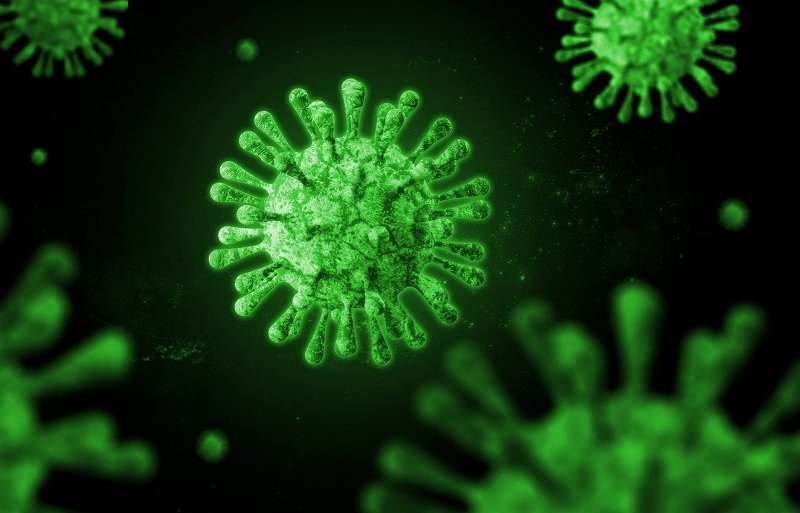Punjab issues advisory on H3N2 variant: All you Need to Know
H3N2 is the new COVID variant you need to look out for.
H3N2 is the new deadly virus spreading across the country.
If you are surrounded by these stories, it is time to stop believing them. Many speculations are doing the rounds and very few contain facts about H3N2. First things first, H3N2 is not a new virus. Secondly, it is not a COVID variant, despite its history of being a pandemic. Said that you must remain cautious and this article will fully understand this variant.
The Punjab govt has issued strict instructions to government hospitals, health facilities, and District Surveillance Units to observe and prevent the outbreak of H3N2 influenza. The H3N2 virus is known to have symptoms. In the advisory issued by the Punjab government, it is said that children, pregnant women, older people, lung infection patients, and asthma patients are at a high risk of contracting the H3N2 influenza virus. However, the H3N2 virus is not a variant of the coronavirus, but it can be prevented by following similar precautionary methods as COVID-19. In this article, we will discuss everything you need to know about the H3N2 virus and how to prevent its outbreak:
What is the H3N2 variant?
H3N2 is a subtype of the seasonal influenza virus. The four types of influenza viruses are categorized under A, B, C, and D, belonging to the Orthomyxoviridae family. H3N2 Influenza is a kind of influenza virus that causes illness in humans. It usually causes mild to moderate symptoms but can be severe in people who are at high risk for complications from the flu. H3N2 was first identified in humans in 1968-69 and had been circulating since then. The virus causes annual epidemics every winter season, with peaks occurring between December and March each year. Currently, the country is witnessing H3N2 influenza as well as H1N1 influenza. Generally, the first peak for influenza is observed in the months of January to March, while the second peak starts after the monsoon ends. The second peak decreases until the end of March.
Observe COVID-like behaviour
Currently, we are at the start of the season of influenza. This kind of seasonal influenza takes place throughout the world. Currently, there are only a few active cases of the H3N2 virus throughout the country. With this in mind, the Punjab government urged people not to worry and panic. One of the simplest ways to avoid contracting the H3N2 virus is to simply observe COVID-like behaviour. People need to start being responsible and careful and take steps to avoid getting in contact with the H3N2 virus.
Monitor patients with symptoms
Patients who are suffering from flu-like symptoms, as well as who have severe respiratory ailments, need to be monitored in the IPD and OPD of all districts within Punjab to make sure that the H3N2 virus gets detected during the early stages. If any early rising trends are observed, with early screening, these will be properly detected in time. With proper detection, the chances of recovery in high-risk people maximize. For patients who suffer from mild symptoms, it is best to follow safe practices to ensure that they do not transmit the virus to the people around them.
High-risk people need to practice care
This year is witnessing many patients who are suffering from influenza. Most of these patients have a medical history related to asthma or serious health conditions because of coronavirus and asthma. It is clear that people who suffer from respiratory illnesses are at high risk of H3N2 influenza, along with people who are suffering from symptoms such as body aches, headache, watery nose, increased mucus production, cough, cold, and fever for a long while. At the same time, people who are suffering from lung disease also need to take care of. Older adults who are above the age of 65 years of age, along with children who are younger than 5 years of age, also need to be more cautious with influenza.
The central government also issues COVID advisory
The central government has also published a COVID advisory for six states. These are Gujarat, Maharashtra, Telangana, Tamil Nadu, Karnataka, and Kerala. However, Punjab is not included in these states. Recently conducting genome sequencing of the current coronavirus concluded that even though the variant is non-hazardous, people still need to practice caution and safety. The symptoms of H3N2 influenza and COVID are quite similar in nature.
Prevention against H3N2 influenza
Here are some ways in which you can prevent contracting H3N2 influenza:
- Avoid visiting crowded places.
- If you are suffering from a cold or a cough, do not touch public things.
- Wash your hands frequently.
- Avoid putting your hands on your mouth, eyes, and nose.
- In case you are suffering from any influenza-like symptoms, it is important to get it tested immediately to encourage early screening at pathology labs such as Helix Pathlabs.
- Since the disease transmission is generally airborne from one person to another, cover your mouth to avoid any large droplets generated due to sneezing or coughing.
- Do not touch any contaminated object or surface since the virus can also spread due to indirect contact or fomite transmission.
- Avoid close contact with other people, such as handshaking.
Government to keep an eye on the situation and spread awareness
The Punjab government believes that if people practice these precautions against both influenza and coronavirus, the country would be able to put a stop to both health concerns at the very beginning and even stop them from turning into a pandemic. Even though the current variant of coronavirus is not dangerous, it needs to be prevented by taking precautions. The government hospitals and health facilities around the state of Punjab have been asked to monitor and report the situation every day. The government also plans to use FM radio and newspapers to spread awareness among people regarding the H3N2 influenza and its prevention.
COVID-19 Vs H3N2
Even though the symptoms of the H3N2 virus are similar to the coronavirus, it is not a COVID variant. Body aches, loss of appetite, nausea, headache, runny nose, increased mucus production, prolonged cough, and high fever characterize the H3N2 virus. There are four kinds of influenza. Among these types, Influenza A is the most common pathogen for humans. Globally, influenza cases are typically seen to increase during certain months of the year. India usually witnesses two peaks of seasonal influenza: one from January to March and another one in the post-monsoon season.
The number of cases is expected to decline
According to the government, the cases are rising due to people suffering from seasonal influenza. These numbers are expected to decline to start March end as per the peak cycle. In many cases, the condition is self-limiting along with symptoms of cold, cough, fever, and body aches and generally takes care of itself within a week. However, there are also potentially high-risk groups that include elderly people above the age of 65, pregnant women, young children, and infants who need to be extra cautious and avoid suffering from H3N2 influenza as much as possible. These high-risk groups are also more prone to experience symptomatic illnesses that need hospitalization as well.
Conclusion
The H3N2 influenza is not another coronavirus variant. However, both coronavirus and H3N2 virus do present similar symptoms and can be avoided by practising similar precautionary methods. Even though seasonal flu and influenza are generally mild, for high-risk groups, H3N2 influenza could pose a serious health risk. If you are suffering from symptoms, it is crucial to get yourself tested at Helix Pathlabs and start appropriate treatment. Early screening is also crucial to ensure that if you suffer from H3N2 influenza, it will be caught and treated at an early stage.
Meet Our MD, Dr. Charandeep Singh Sahni
We take pride in the fact that we are led and driven by the innovative and humanitarian approach of our honourable managing director, Dr Charandeep Singh Sahni. Carrying several years of experience in medical services under his belt, Dr Sahni has been actively involved in organizing and conducting national and state-level conferences at TMH. He specializes in lymph node pathology, GI pathology, head and neck pathology, and breast pathology.
Medical Academic Background and Career at a Glance
- MBBS from the prestigious Grant Medical College and Sir JJ Hospital, Mumbai with distinction in Biochemistry and Pharmacology in 2000.
- MD in pathology from Tata Memorial Hospital, Mumbai from 2003-06.
- Worked as Senior Resident in Department of Histopathology at PGIMER, Chandigarh.
Research and Papers Presented by Dr Sahni
Dr Sahni also demonstrated his professional achievements by presenting his research works at several eminent conferences. Some of his research work was published and referred by eminent medical journals.
- He presented a poster on “Aorto-Left Atrial Fistula” in APCON 2003 at Bhubaneswar.
- His paper on “Analysis of Renal Cell Carcinoma: A Study of 173 cases” in APCON 2005 at Pune was lauded by the healthcare community.
- In 2006, he demonstrated an important piece of research titled “Distribution, clinicopathological characteristics and immunophenotyping of Hodgkin’s Lymphoma: A study of 313 cases using WHO classification (2000)” at APCON 2006 in Bangalore.
Key Published Works:
Dr Sahni has also been involved with many articles published by leading science and medical journals.
- Bothra R, Pai PS, Chaturvedi P, Majeed TA, Singh C, Gujral S, Kane SV. Follicular dendritic cell tumour of tonsil – is it an underdiagnosed entity? Indian J Cancer 2005; 42 (4): 211-4.
- Charandeep S Sahni, Sangeeta B. Desai. Distribution and Clinicopathological characteristics of non- Hodgkin’s lymphoma in India: A study of 935 cases using the WHO classification of lymphoid neoplasms (2000). Leukaemia and Lymphoma 2007; 48 (1): 122-133.
- Charandeep Sahni, Sangeeta Desai. Primary testicular precursor B-lymphoblastic lymphoma: A rare entity. Leukaemia and Lymphoma 2007

